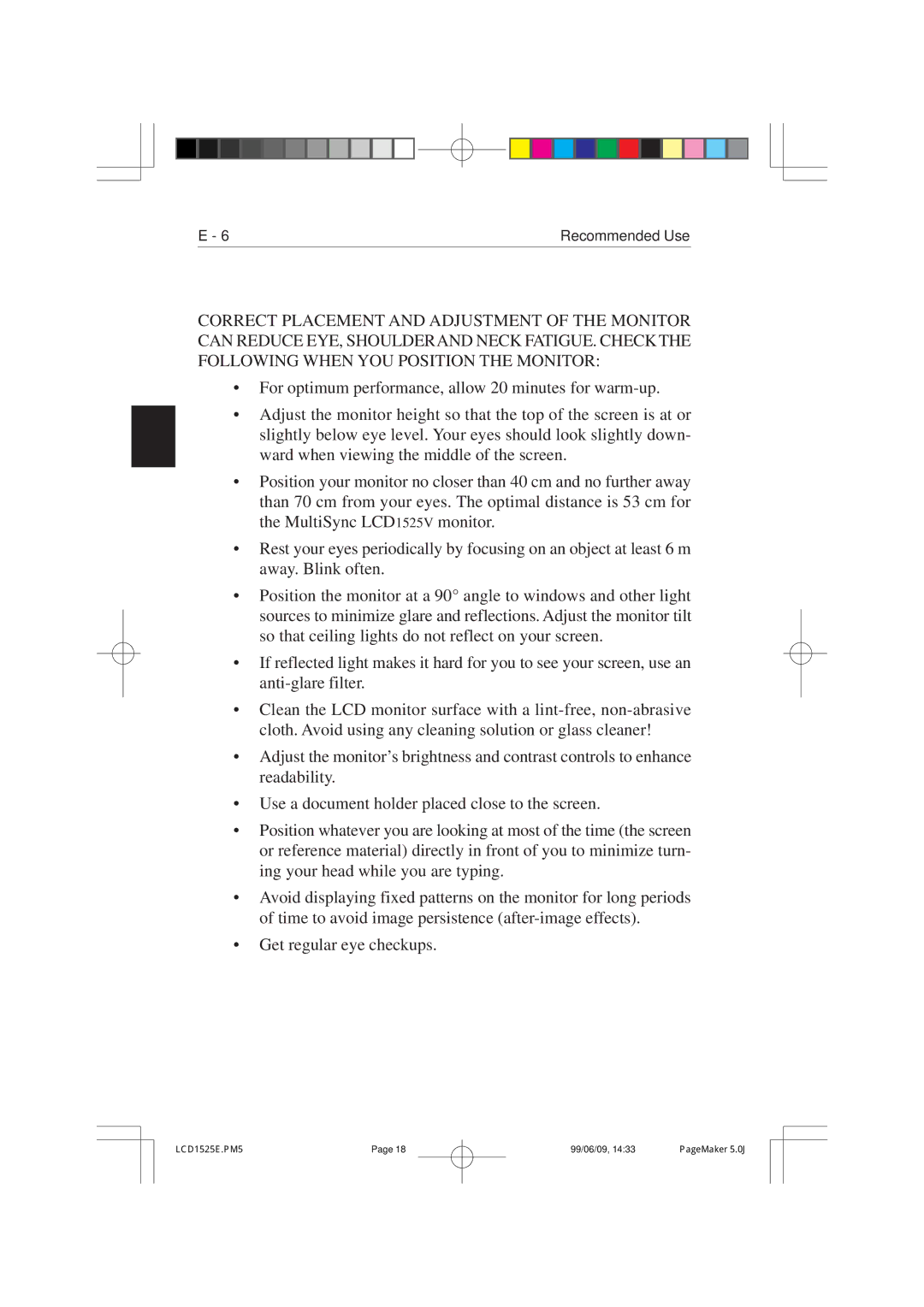
|
|
|
|
|
|
|
|
|
|
|
|
|
|
|
| E - 6 |
|
|
| Recommended Use |
|
|
| ||||||
|
|
|
|
|
|
|
|
|
|
|
|
|
|
|
CORRECT PLACEMENT AND ADJUSTMENT OF THE MONITOR CAN REDUCE EYE, SHOULDERAND NECK FATIGUE. CHECK THE FOLLOWING WHEN YOU POSITION THE MONITOR:
•For optimum performance, allow 20 minutes for
•Adjust the monitor height so that the top of the screen is at or slightly below eye level. Your eyes should look slightly down- ward when viewing the middle of the screen.
•Position your monitor no closer than 40 cm and no further away than 70 cm from your eyes. The optimal distance is 53 cm for the MultiSync LCD1525V monitor.
•Rest your eyes periodically by focusing on an object at least 6 m away. Blink often.
•Position the monitor at a 90° angle to windows and other light sources to minimize glare and reflections. Adjust the monitor tilt so that ceiling lights do not reflect on your screen.
•If reflected light makes it hard for you to see your screen, use an
•Clean the LCD monitor surface with a
•Adjust the monitor’s brightness and contrast controls to enhance readability.
•Use a document holder placed close to the screen.
•Position whatever you are looking at most of the time (the screen or reference material) directly in front of you to minimize turn- ing your head while you are typing.
•Avoid displaying fixed patterns on the monitor for long periods of time to avoid image persistence
•Get regular eye checkups.
LCD1525E.PM5 | Page 18 | 99/06/09, 14:33 | PageMaker 5.0J |
